Walk-in showers are all the rage these days. They’re sleek stylish and can make your bathroom feel more spacious and transform it into the focal point of your home. But before you decide to convert your tub into a walk-in shower, there are some things you need to know.
This blog post will discuss the design of these showers, the installation process, and what to expect in terms of costs. So if you’re thinking about making this change to your home bathroom, read on for some helpful advice!
What are walk-in showers?

While they may seem like a modern bathroom trend, walk-in showers have been around since the mid-20th century. If we define it, this shower has no curb or enclosure, making it possible to roll or easily walk into it.
These showers can be a great way to save space in a small bathroom. Because there is no tub enclosure to take up the room, the shower can be installed in a corner or along one shower wall of the bathroom. And because there is no curb, the shower’s floor can be integrated into the rest of the bathroom floor, making it easier to walk from one end of the room to another.
- They are much larger than typical bathtubs, so you can walk in comfortably and enjoy the ultimate relaxation.
- It saves water because the design is low-flow and features rain shower heads with an option for the handheld sprayer.
- They usually include built-in seats that offer more options when sitting down may not be possible.
- They often provide better insulation from noise pollution and help keep the bathroom warmer in colder weather.
- It's a great way to add value to your home because they are often seen as a luxury items.
- They are much easier to clean than tubs or shower stalls since there is no need to scrub around the edges or corners.
- These showers can be customized to fit any style or taste, making them a versatile addition to any bathroom.
1. How do you choose the right one for your home?
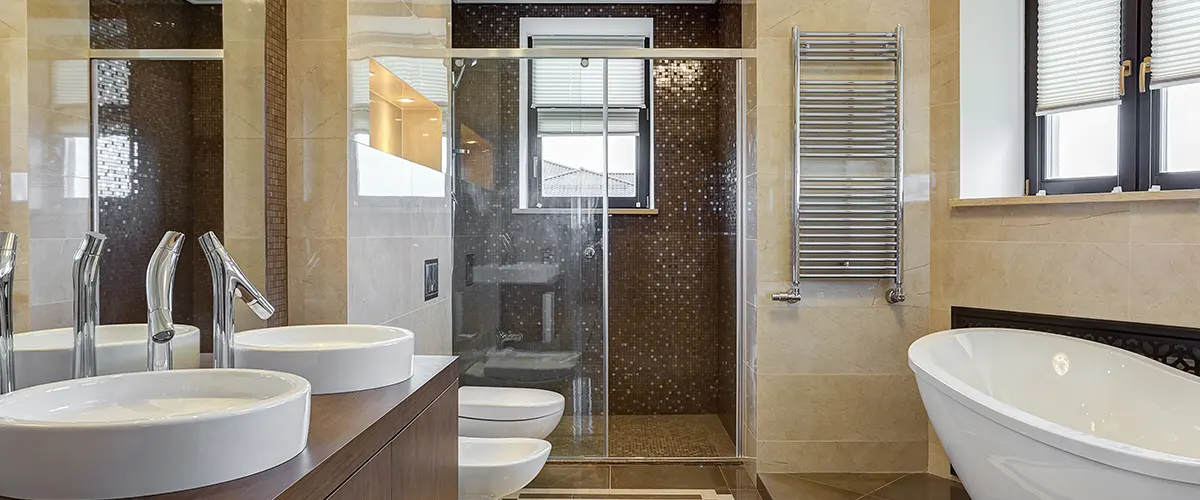
- The size of your bathroom and the amount of space you have to work with
- The shape of your bathroom
- Whether you want a stand-alone walk-in shower or one that's incorporated into a bathtub/shower combo
- The style of your bathroom
- Think about the features you want
- Consider the materials you want to use
Different Types of Walk-in Shower
Another thing to think about is deciding on the walk-in shower type that will work best for your bathroom. There are three main shower types: corner showers, neo-angle showers, and walk-in showers without a curb.
Each shower type has its unique pros and cons, so you’ll want to consider your specific needs before making a decision. For example, if you have a large bathroom with ample space, a corner walk-in shower might be the best fit. But if your bathroom is small or awkwardly shaped, then a shower without a curb might be a better option.

Corner showers

Neo-angle showers
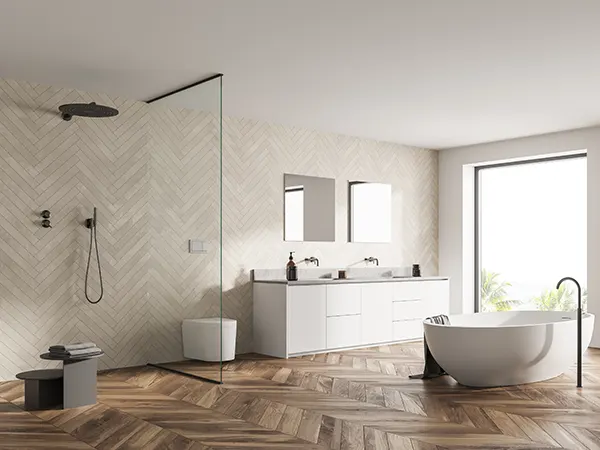
Walk-in showers without a curb
2. How do you install a walk-in shower?
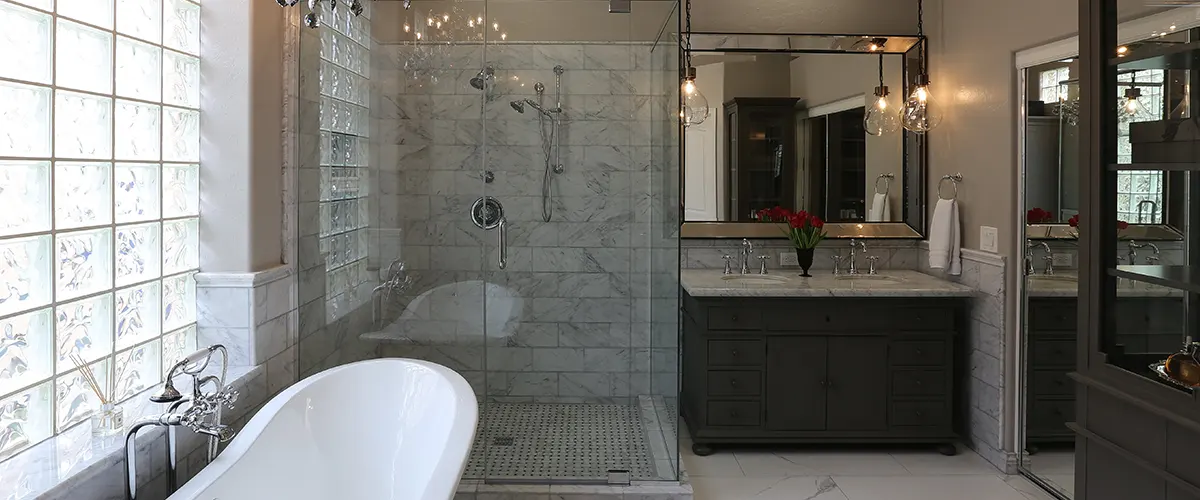
Walk-in showers can be a great addition to any bathroom, but installation can be challenging. Many walk-in showers require waterproofing and tiling, which are not tasks that most homeowners are familiar with.
For this reason, it’s always best to hire a professional to install your walk-in shower. They will have the experience and knowledge necessary to do the job correctly and ensure that your shower is watertight and looks excellent.
To have a clear idea of how the installation works, here are the basic steps of walk-in shower installation:
- Measure the space where you want your shower to go and draw up a plan
- Install a waterproof membrane on the walls and floor of the shower area
- Install the shower tile base and waterproof it
- Install the drainage system and make sure it's properly sloped
- Install the shower enclosure and tile it to match the rest of your bathroom
- Caulk all the seams and joints in the walk-in shower enclosure
- Finish up by installing all the accessories, such as the showerhead, faucet, and shelves
Maintenance tips
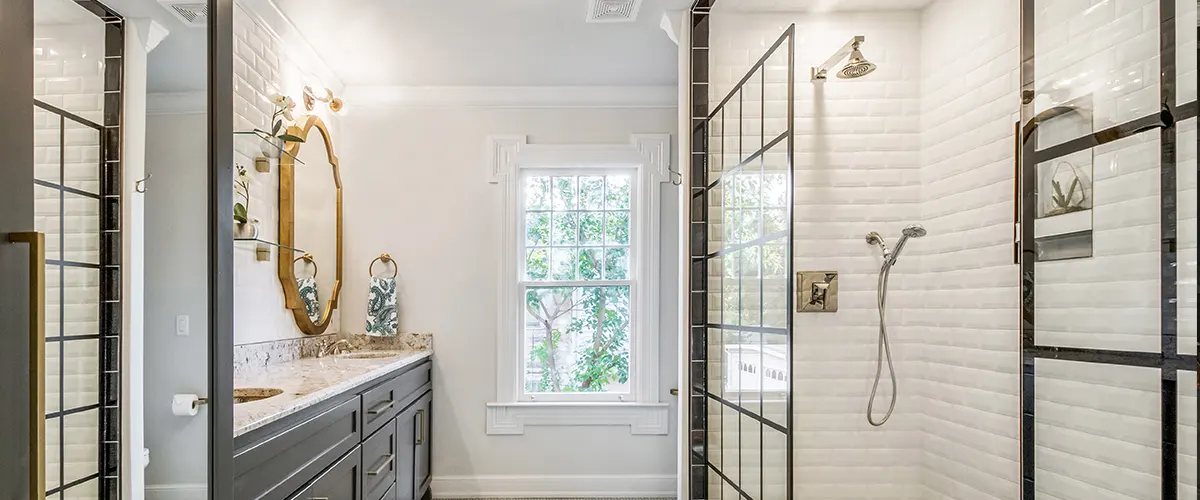
- Clean the shower walls regularly using a mild detergent and a soft cloth to prevent the build-up of soap scum and calcium deposits
- Use a squeegee after each use to remove excess water
- Wax the enclosure every few months to keep it looking shiny and new
- Inspect the drainage system regularly and clear any obstructions as needed
- Repair any chips or cracks in the white subway tile as soon as you notice them
- Inspect it for leaks regularly, and repair any leaks as soon as you notice them
- Caulk all the seams and joints in the enclosure every few months to keep water from seeping behind the tile
3. Special considerations for tight spaces
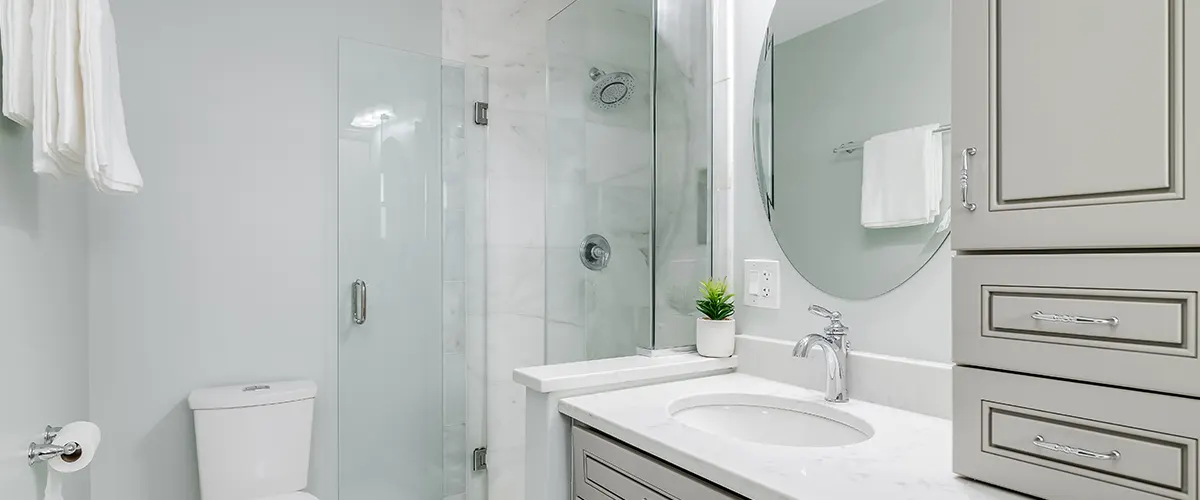
When choosing a walk-in shower for a tiny bathroom, there are a few special considerations. The first thing you need to think about is choosing a walk-in shower with a minimal footprint.Remember that a shower door, like a sliding or pivoting door, is ideal for smaller spaces.
Secondly, opt for a walk-in shower work with a low profile. This will create the appearance of more space in the bathroom.
Another thing you should consider is the drain and faucet placement location when designing a walk-in shower for a small bathroom or tight room. These features should be placed in areas that will not impede traffic flow.
Finally, think about the functionality of your walk-in shower – consider choosing one with a seat if you need it. A walk-in shower with a seat is an excellent option for those who want the convenience of a walk-in shower but also need somewhere to sit down. This option will save on valuable floor space.
4. The Cost of a Walk-in shower
Walk-in showers can be a great addition to any bathroom, but they can also be expensive. The cost varies depending on the size, style, and features of the shower.
For a basic walk-in shower without any bells and whistles, you can expect to pay around $1,000. If you want a large walk-in shower with natural stone, a seat or shower bench, multiple jets, and a rainfall showerhead, you can expect to pay upwards of $5,000.
If you’re looking to convert your existing tub into a walk-in shower, the cost will be more expensive as it will require additional materials and labor. You can expect to pay around $2000 for a basic walk-in shower conversion.
Factors that affect the overall cost:
One factor that can affect the cost of a walk-in shower is the type of installation you choose. If you decide to hire a professional to install your walk-in shower, that will add to the overall cost.
Another factor affecting the cost is the type of materials you choose. Higher-quality materials like granite or marble will cost more than cheaper alternatives like plastic or acrylic.
The size of the walk-in shower you choose is another factor that can affect the cost. If you have a large family or want to create an open-concept bathroom, walk-in showers are ideal.
Finally, the location of your walk-in shower can also affect the cost. If you live in a remote area or if the installation requires special permits, that will add to the overall cost.
5. Designing a walk-in shower
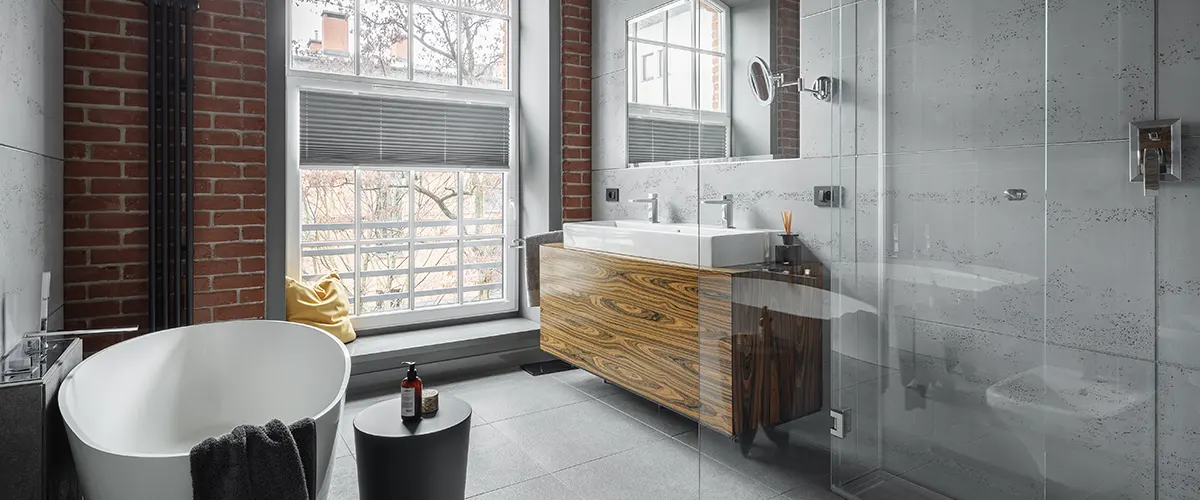
Tile treatments
Layout
Shower floor
Storage
Fixtures
Glass doors or curtains
A glass door offers a sleek, seamless look and is easy to clean. You can choose for your master bath a shower with a glass enclosure to add that luxury touch to your bathroom.
While a shower curtain provides more privacy, curtains are prone to mildew and must be replaced every three to six months.
Finishes
Conclusion

Walk-in showers are growing in popularity for several reasons. They’re stylish and luxurious, but they also provide accessibility and convenience for everyone, regardless of age or ability.
If you’re thinking of installing a walk-in shower in your home, our team can help. Acebath has extensive experience with walk-in showers and can guide you through the entire process, from choosing the suitable model to installation. Plus, we offer competitive pricing on all services. Contact us today to get started!
